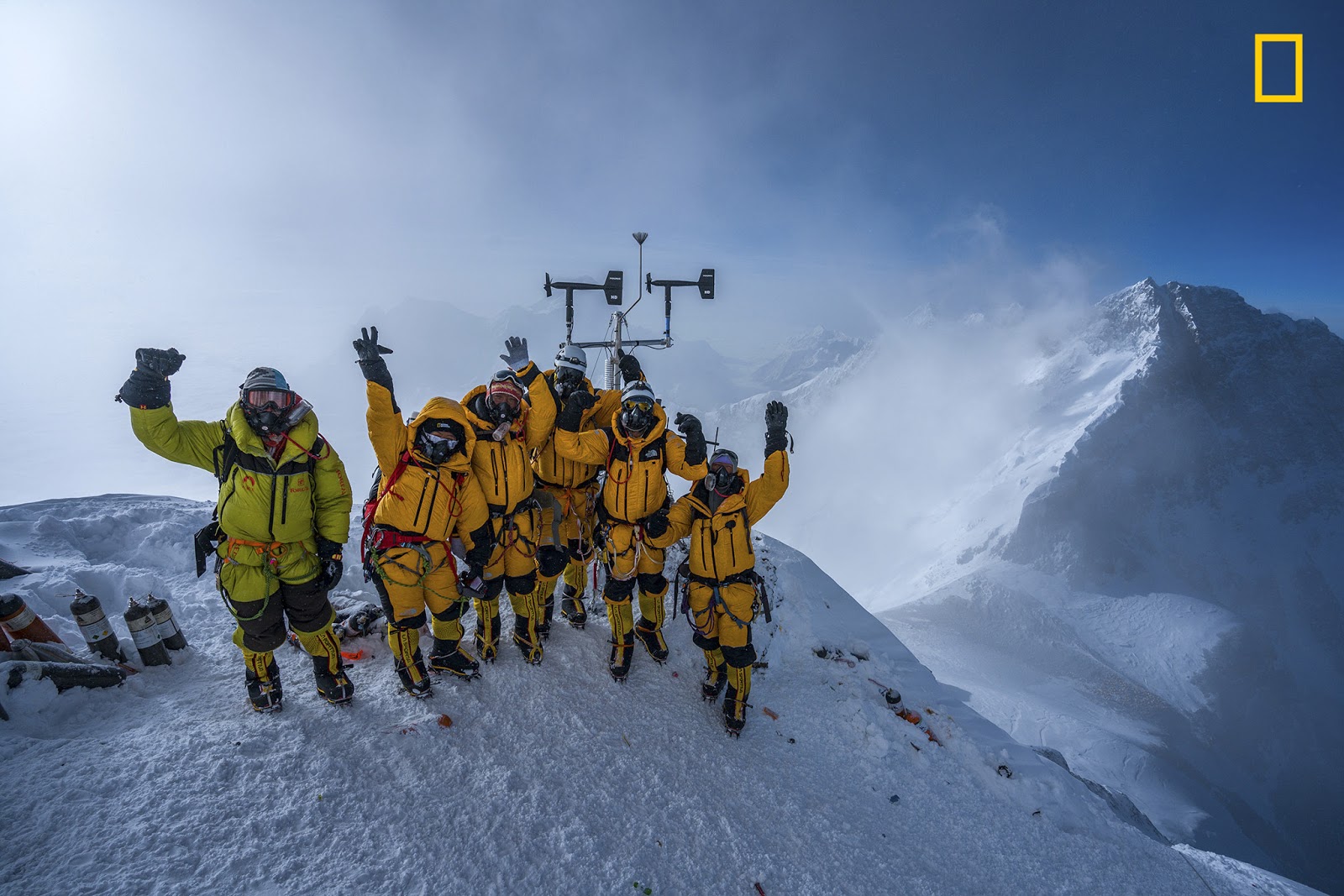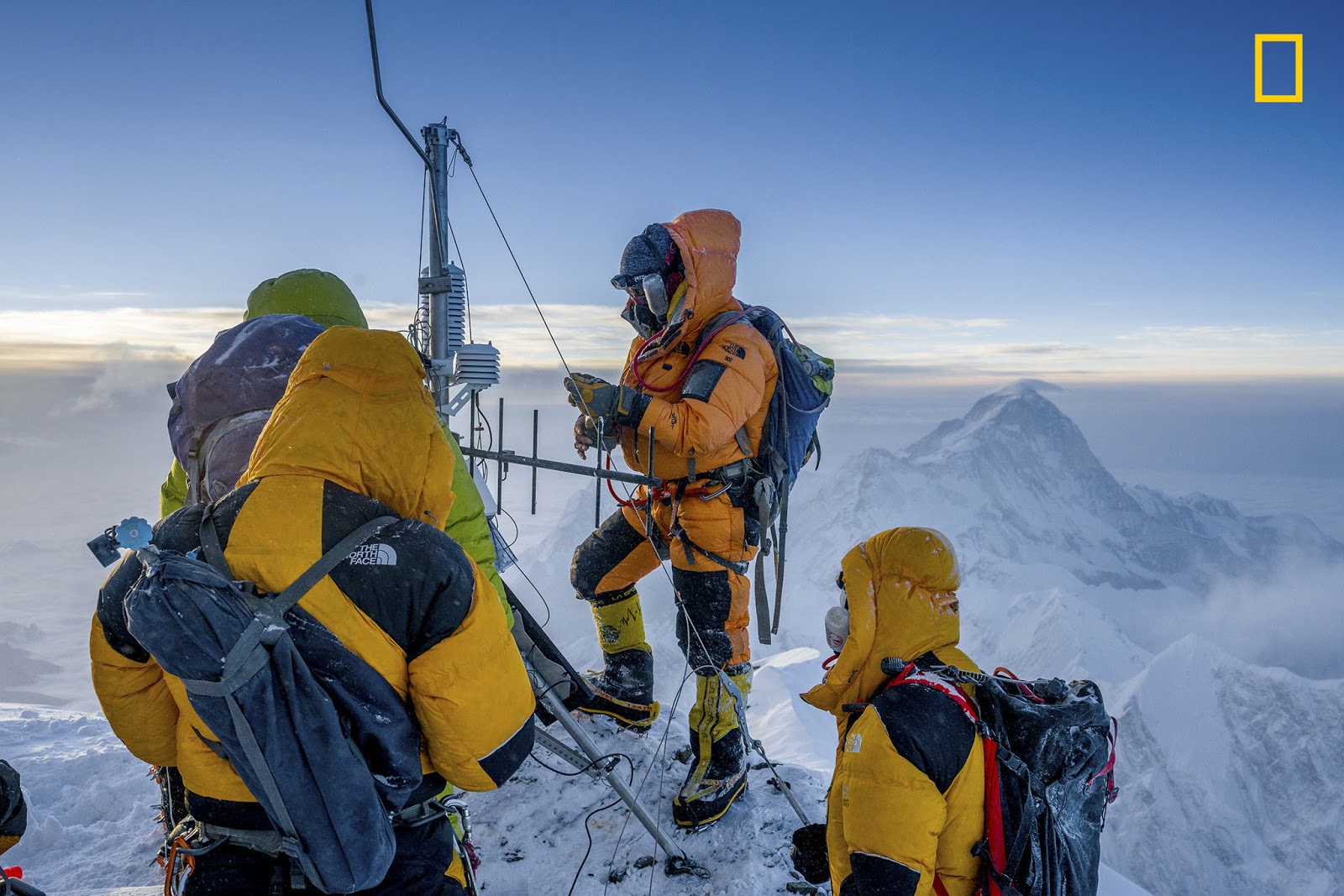
The team celebrates the success of their final weather station installation, which has already begun to send data back to a National Geographic server.PHOTOGRAPH BY MARK FISHER/NATIONAL GEOGRAPHIC
The National Geographic Society and Tribhuvan University, thanks to a partnership with Rolex, led a team of scientists, climbers and explorers on a scientific expedition to Mount Everest. Mount Everest is scientifically interesting as it is one of the few peaks high enough to enter to South Asia jet stream. The scientists and sherpas not only had to face Everest’s famous extreme weather, but also the record crowds that had recently made headlines. For full details of the adventure and the read National Geographic’s “Inside the Everest Expedition that Built the World’s Highest Weather Station.” Below is a brief snapshot of the expedition:

After deciding to abandon their summit attempt, the team puts together their final weather station on Everest's Balcony. During the process, they realized they had left a crucial piece of equipment behind: the mount for the system's wind sensors. Determined to complete the job, the team rigged the handle of a shovel to attach the sensors.PHOTOGRAPH BY MARK FISHER/NATIONAL GEOGRAPHIC
Main Goal of the Expedition:
- To study the extreme conditions of high-elevation mountain ranges that are key to discovering true impacts of climate and environmental changes.
Records Broken:
- Installation of the two highest weather stations in the world
- Collecting the highest-ever ice core sample
- Completing the highest-elevation helicopter-based lidar scan
What They Are Saying:
- Jonathan Baillie, Executive Vice President and Chief Scientist at the National Geographic Society: Climate change is one of the biggest challenges facing humanity and there is still much to learn about how it’s already altered the world, from the deepest parts of the ocean to its tallest mountains. By harnessing our 131-year history of exploration and venturing into some of the most extreme environments on the planet, we will fill critical data gaps on the world’s life support systems and drive solutions to assure that they can continue to fuel our future.
- Paul Mayewski, Director of the Climate Change Institute at the University of Maine: This is a new We believe the best way to do science on Everest isn’t just to do one kind of science, but do many kinds of science.
For More Information:
- Visit NationalGeographic.com
